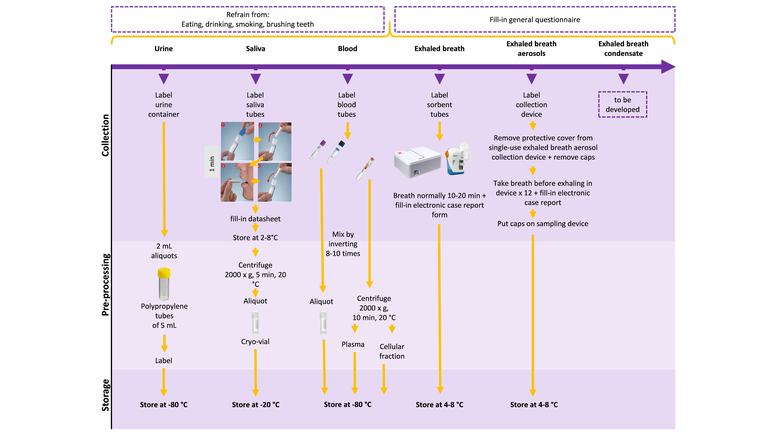Biological sampling
In the EPHOR project, the relation between the working-life exposome (occupational as well as non-occupational factors) and non-communicable diseases is studied. This includes the targeted and agnostic common biomonitoring, omics and bioassays on traditional biological matrices in addition to method development for non-invasive monitoring. Methods are applied for the following media:
- Urine
- Saliva
- Blood
- Exhaled breath
- Exhaled breath aerosols
- Exhaled breath condensate
Protocols for the various media are included below.
For more details about the use of these methods in EPHOR, see: Application in EPHOR
Publications:
Verscheure, Eline; Schlünssen, Vivi; Broberg, Karin; Makris, Konstantinos; Charisiadis,Pantelis; Narui, Shan; Samulin Erdem, Johanna; Harding, Barbara; Kogevinas, Manolis; Samuel, Helen; Murch, William; Christie, Francesca; Schaber, Chad; Stierum, Rob; Pronk, Anjoeka; Godderis, Lode; Ghosh, Manosij, 2022, "EPHOR Deliverable D3.1- Protocols for collection, pre-processing and storage of biological samples (WP3)", https://doi.org/10.48804/9S65KB, KU Leuven RDR, V1
Verscheure, E., Stierum, R., Schlünssen, V., Würtz, A. M. L., Vanneste, D., Kogevinas, M., ... & Ghosh, M. (2023). Characterization of the internal working-life exposome using minimally and non-invasive sampling methods-a narrative review. DOI: 10.1016/j.envres.2023.117001 Environmental Research, 238, 117001.
1.0
-
Health scientists
-
Occupational Health Practitioners
-
Interactive